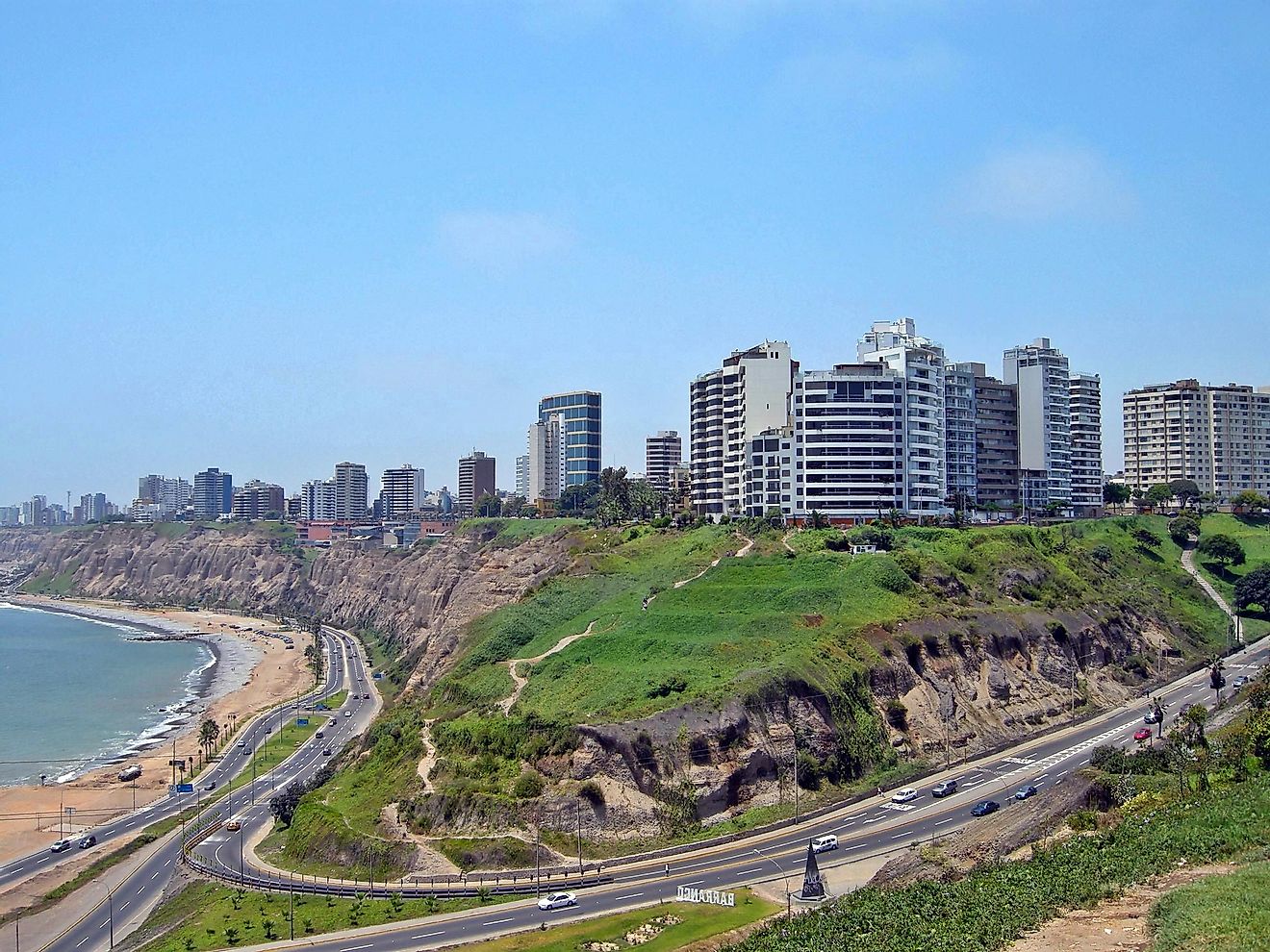Biggest Cities In Peru

Peru, a South American country, has a rich culture and long history of human settlement. The earliest inhabitants were nomadic tribal groups that lived along the coast, deep in the jungles, and high in the mountains. These individuals developed agricultural practices, around the same time as Mesopotamia, and from this emerged the oldest civilization of the western hemisphere, Caral (or Norte Chico). This society ruled the coastal region from 3200 BC to 1800 BC. Other prominent civilizations that occurred after the Caral include Chavin, Lima, Nazca, Moche, Sipan, Wari, and the famous Inca. The Incan empire ruled from 1438 to 1532 and is most famous for having confronted Spanish conquerors after they landed in 1531. The settlements created by many of these cultures are still important urban centers today. This article takes a look at the most populated of these cities.
Most Populated Cities
Lima
Lima, the capital of Peru, has a registered population of 9,886,866 making it the most populated city in the country. After Cairo in Egypt, this is the second largest desert city in the world. It borders the Pacific Ocean which contributes to its gray, humid, foggy, winters; in wintertime, the sky is referred to as “donkey’s stomach” due to its neverending grayness. The summers are hot and humid. This city was once the civilization site of the Lima culture which was later dominated by the Inca, Lima-culture structures remain today and dot the city. The population here is a mix of Mestizo, European, Afro-Peruvian, Indigenous, Chinese, and Japanese. Interestingly, Lima has the largest Chinese population in South America which grew after slavery was abolished. Today, the city is rapidly growing due to rural to urban migration which is rooted in previous land reform laws that once allowed for squatting and land title attainment. There was also an influx of rural immigrants during the era of terrorism from the 1980’s through the 1990’s. Since the majority of job and educational opportunities are found in this centralized city and there are more customers for informal entrepreneurial endeavors, many people are drawn here for those reasons.
Arequipa
The second most populated city in Peru is Arequipa with 1,070,709 people. Arequipa was the capital of Peru immediately after its independence from Spain, but that lasted for only 48 years. This city is located at 7,638 feet above sea level and about 3 hours from the southern coast. The climate here is dry and sunny with the cool evenings typical of desert life. This area was developed by the Chimbe and Cabana tribes (among others) and was later conquered by the Incan Empire, who lost power to Spanish colonialists. The city was officially founded in 1540. In the late 20th century, the population shot up in response to industrial developments. The rural region surrounding the city also experienced two natural disasters, an earthquake in 1958 and a drought that drove people into the city. The population reflects its long colonial history.
Trujillo
Trujillo is third on the list with a population of 805,150. Like Lima, this city is located on the Pacific coast in the north. Trujillo was developed by the Moche and Chimu cultures, evidence of their ancient civilizations are popular tourist destinations today. Like most other pre-Columbian tribes, the Inca moved into the region and took control before being defeated by Spanish invaders. Residents here enjoy a mild desert climate and Peruvians know Trujillo to be the “City of Eternal Springtime.” The small population growth that occurs today is a result of rural to urban migration which was encouraged during the 1800’s to staff the lucrative sugar cane industry. The most important products today are asparagus and shoes. This city is also the financial center of Northern Peru.
Other large cities in the country include: Chiclayo (526,010), Piura (421,648), Iquitos (360,314), Cuzco (348,935), Huancayo (336,349), Chimbote (320,240), and Pucallpa (270,780).
Growth Trends
Peru's population is expected to grow in the coming years. The fertility rate continues to be high in rural areas although, so too, is the infant mortality rate. As individuals from the rural areas continue to flow into the urban, coastal centers bringing with them high fertility rates, the population will grow exponentially. In the cities, the infant mortality rate is three times lower. Growth is not expected from Peru-born individuals alone, however. The country receives immigrants from all over the world who come to work in the successful mining industry and growing financial sector (particularly in Lima). Peru also receives economic refugees from countries within South America.
The Most Populated Cities In Peru
| Rank | City | Region | 2016 Census |
|---|---|---|---|
| 1 | Lima | Lima | 9,886,866 |
| 2 | Arequipa | Arequipa | 1,070,709 |
| 3 | Trujillo | Trujillo | 805,150 |
| 4 | Chiclayo | Lambayeque | 526,010 |
| 5 | Piura | Piura | 421,648 |
| 6 | Iquitos | Loreto | 360,314 |
| 7 | Cusco | Cusco | 348,935 |
| 8 | Huancayo | Junín | 336,349 |
| 9 | Chimbote | Ancash | 320,240 |
| 10 | Pucallpa | Ucayali | 270,780 |







